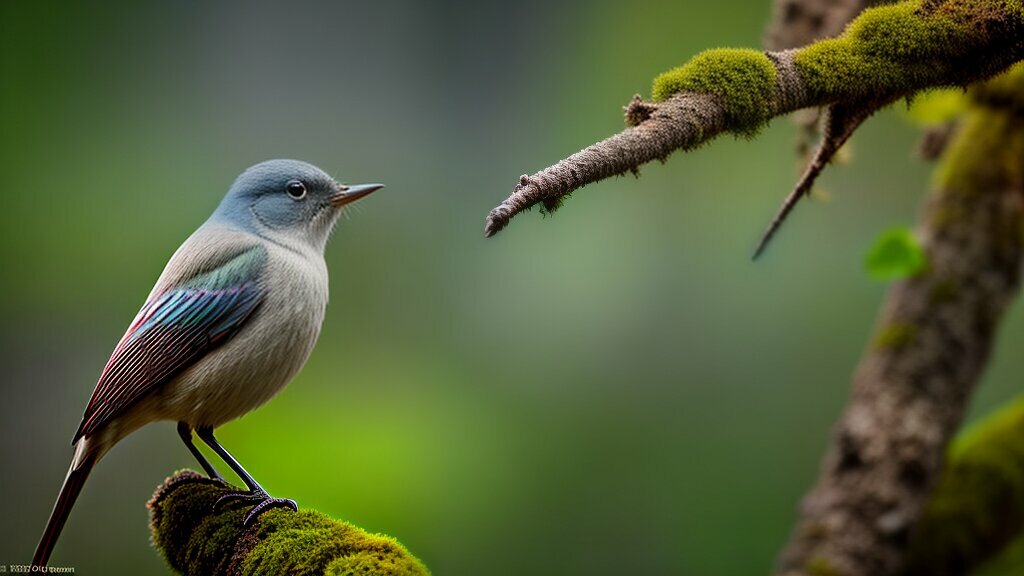Biodiversity offsetting is a conservation strategy that aims to balance development with environmental protection and create positive impacts on our ecosystems. It involves compensating for the loss of biodiversity caused by development by implementing measures to restore or enhance ecosystems elsewhere. In some countries, such as England, it is called Biodiversity Net Gain.
Biodiversity offsetting is a way to mitigate the negative effects of development on the environment and ensure that biodiversity is protected. By implementing this strategy, we can work towards a sustainable future that prioritises both development and conservation.
Key Takeaways:
- Biodiversity offsetting is a conservation strategy that balances development with environmental protection.
- It involves compensating for the loss of biodiversity caused by development by implementing measures to restore or enhance ecosystems elsewhere.
- This strategy helps mitigate the negative effects of development on the environment and ensures that biodiversity is protected.
Understanding Biodiversity Offsetting
As we saw earlier, biodiversity offsetting is a conservation strategy that aims to balance development with environmental protection. It involves measures to compensate for the loss of biodiversity caused by development projects. But what does this strategy entail? Let us explore it in more detail.
What are the different conservation strategies under biodiversity offsetting?
Biodiversity offsetting involves different conservation strategies, depending on the impact of the development project and the environmental context. The following are some examples of conservation strategies under biodiversity offsetting:
- Habitat restoration
- Species reintroduction
- Establishing protected areas
- Creating green corridors
- Creating buffer zones
These strategies aim to restore or create habitats and help prevent the fragmentation of ecosystems, which can result from development.

How does biodiversity offsetting contribute to biodiversity management?
Biodiversity offsetting aims to mitigate the negative impacts on biodiversity caused by development projects. By implementing conservation strategies under biodiversity offsetting, we can manage and maintain the biodiversity of ecosystems. This strategy ensures that development projects are more sustainable and can achieve environmental protection goals.
Why is biodiversity management important?
Biodiversity provides valuable ecosystem services such as pollination, carbon sequestration, soil formation, and water regulation. Therefore, maintaining biodiversity is crucial for the sustainability of our societies. Biodiversity management helps us preserve the ecosystems that provide us with these services.
In the next section, we will discuss the need for environmental conservation and the role of biodiversity offsetting in mitigating the negative impacts of development on the environment.
The Need for Environmental Conservation
Environmental conservation is crucial in the context of biodiversity offsetting. Biodiversity conservation and the protection of ecosystems are essential for the well-being of our planet and all living beings. By protecting natural habitats, we can ensure the survival of countless species, maintain ecosystem functions and benefits, and address global challenges like climate change.
Biodiversity is the foundation of ecosystem services that human societies rely on, such as clean air and water, pollination, and soil fertility. These services contribute to human well-being and economic development in many sectors, from agriculture to tourism and pharmaceuticals. By conserving biodiversity, we can maintain these services and ensure their continuity.
However, biodiversity loss is a significant threat to ecosystems worldwide, caused by various factors such as habitat destruction, overexploitation, climate change, and pollution. The loss of biodiversity undermines the resilience and productivity of ecosystems, affecting their capacity to provide services and sustain livelihoods.
Therefore, it is essential to implement measures to conserve biodiversity, such as biodiversity offsetting, to ensure the protection and restoration of natural habitats. By doing so, we can create a sustainable environment that fosters development while preserving the planet’s natural resources for future generations.

The Role of Biodiversity Offsetting in Environmental Impact Mitigation
As we have discussed, development projects can have negative impacts on biodiversity, leading to the destruction of habitats and loss of species. Biodiversity offsetting provides a solution to this problem by helping to mitigate environmental impacts caused by development.
By requiring developers to compensate for the biodiversity lost as a result of their projects, biodiversity offsetting helps to minimize the negative effects on ecosystems. This is achieved through the implementation of specific actions known as offset measures.
Offset measures may include habitat restoration, creation of new habitats, and enhancement of existing habitats, among others. These measures are designed to create an equivalent level of biodiversity to that lost, ensuring that there is no net biodiversity loss.

For example, a development project that involves the destruction of a wetland habitat may be required to implement an offset measure such as the restoration of a degraded wetland of similar size and value. This would compensate for the loss of the original wetland, ensuring that there is no net loss of biodiversity.
The success of biodiversity offsetting in mitigating environmental impacts is largely dependent on the effectiveness of the offset measures. It is crucial that offset measures are properly designed, implemented, and monitored to ensure their effectiveness in achieving the intended conservation goals.
Next, we will explore the different measures involved in biodiversity offsetting in more detail.
Biodiversity Offsetting Measures
Biodiversity offsetting involves the implementation of measures to compensate for the loss of biodiversity due to development. These measures aim to create new habitats or restore existing ones, thereby ensuring the survival of species and maintaining ecological balance.
Habitat creation is a critical aspect of compensating for the loss of biodiversity. This can involve the creation of new habitats, such as wetlands, forests, or grasslands, or restoring existing ones that have been damaged due to development.
Restoration is an essential part of biodiversity offsetting and involves the restoration of habitat quality. This can be achieved by removing invasive species, planting native species, or implementing measures to improve soil conditions. Restoration measures often facilitate the return of native wildlife populations and provide them with the necessary food, shelter, and breeding grounds.
| Habitat Restoration |
Benefits |
| Restoring wetlands |
Improves water quality and prevents floods |
| Planting native vegetation |
Provides food and shelter for native wildlife |
| Invasive species removal |
Prevents the spread of non-native species and restores ecological balance |
Other measures involved in biodiversity offsetting include the creation of wildlife corridors, which enable the movement of wildlife between different habitats, and the provision of nest boxes, bat roosts, and other artificial structures to support wildlife populations.
Incorporating biodiversity offsetting measures into development projects can benefit not just the environment but also the developers themselves. For example, the creation of green spaces and wildlife habitats can enhance the aesthetic appeal of development sites, making them more attractive to potential investors and buyers.
In the next section, we will discuss the benefits and challenges associated with biodiversity offsetting.

Benefits and Challenges of Biodiversity Offsetting
Biodiversity offsetting can provide many benefits for the environment and for development projects. By implementing offsetting measures, we can help to preserve and protect our valuable ecosystems while also allowing for necessary development. Some potential benefits of biodiversity offsetting include:
- Preserving valuable habitats and ecosystems
- Enhancing the functionality of ecosystems and the services they provide
- Helping to meet environmental regulations and requirements
- Addressing stakeholder concerns about environmental impacts
However, there are also challenges associated with biodiversity offsetting. One of the main concerns is that it may not be effective in fully compensating for the loss of biodiversity caused by development. The success of offsetting measures is heavily dependent on the quality and quantity of habitats that are restored or created, as well as the monitoring and evaluation of these measures. Other potential challenges include:
- The difficulty in accurately assessing the value of the biodiversity that has been lost
- The potential for the offsetting measures to be located far from the original site, which may not provide adequate compensation
- The need for effective governance and regulation to ensure that offsetting measures are implemented correctly and effectively
Despite these challenges, biodiversity offsetting remains an important conservation strategy that can help to balance development with environmental protection. By mitigating the negative impacts of development on biodiversity, we can work towards a more sustainable future that prioritizes both economic growth and environmental conservation.

Case Studies of Successful Biodiversity Offset Projects
Real-life examples of successful biodiversity offsetting projects are crucial in highlighting the viability and importance of this conservation strategy. Through these projects, we can see how biodiversity offsetting has been effectively implemented to achieve conservation goals and protect our ecosystems.
Case Study 1: The M1 Junction 19 Improvement Scheme
In 2009, a development project to improve the M1 Junction 19 was proposed with the potential to impact local habitats. To offset this, the Highways Agency implemented a biodiversity offsetting project, which involved planting new hedges and trees across 3.5 hectares of land. This offsetting project created new habitats for local wildlife and contributed to the overall conservation of the area.

Case Study 2: The Wintershall Estate
The Wintershall Estate in Surrey, UK, is an example of successful biodiversity offsetting in the form of habitat restoration. The estate was once used for commercial farming and had a damaged ecosystem. However, through the implementation of biodiversity offsetting projects, such as the restoration of ponds and the planting of wildflowers, the estate has seen a significant increase in biodiversity and the return of rare species such as the water vole.
Case Study 3: The King’s Cross Development Project
The King’s Cross Development Project in London, UK, is an example of how biodiversity offsetting can be integrated into large-scale developments. The project involved the redevelopment of an industrial brownfield site into a commercial and residential hub. However, to offset the impact on local biodiversity, the developers created two new parks and a floating garden, which have become valuable habitats for local wildlife.
Conclusion
Overall, biodiversity offsetting can be a valuable tool in balancing development with environmental protection. By implementing measures such as habitat restoration and conservation planning, we can offset the negative impacts of development and protect our valuable ecosystems.
However, it is important to carefully consider the benefits and challenges associated with biodiversity offsetting. While it can have positive impacts on biodiversity conservation, it must be carefully managed and monitored to ensure its effectiveness.
Striving Towards a Sustainable Future
By understanding and implementing biodiversity offsetting, we can work towards a sustainable future that prioritizes both development and the preservation of our valuable ecosystems. It is important to continue to innovate and improve conservation strategies to ensure that we are protecting the biodiversity and ecosystem services that are vital to our planet.
Through real-life case studies of successful biodiversity offset projects, we can learn from the best practices of others and continue to improve our conservation efforts. Overall, by working together towards a common goal, we can create a more sustainable future for ourselves and future generations to come.
FAQ
Q: What is biodiversity offsetting?
A: Biodiversity offsetting is a conservation strategy that helps balance development with environmental protection. It aims to mitigate the negative impacts of development on ecosystems by creating positive impacts elsewhere.
Q: How does biodiversity offsetting contribute to biodiversity management?
A: Biodiversity offsetting falls under various conservation strategies that focus on managing biodiversity. It helps support the preservation and restoration of biodiversity, ensuring its long-term sustainability.
Q: Why is environmental conservation important in the context of biodiversity offsetting?
A: Environmental conservation is crucial in biodiversity offsetting as it emphasizes the protection of biodiversity and the valuable ecosystem services it provides. It ensures the long-term health and resilience of ecosystems.
Q: What role does biodiversity offsetting play in mitigating environmental impacts?
A: Biodiversity offsetting plays a vital role in mitigating the negative environmental impacts caused by development. It helps minimize the loss of biodiversity by implementing measures that compensate for the ecological damage.
Q: What are the measures involved in biodiversity offsetting?
A: Biodiversity offsetting measures include habitat restoration, creation of new habitats, and other actions to compensate for the loss of biodiversity caused by development projects.
Q: What are the benefits and challenges associated with biodiversity offsetting?
A: Biodiversity offsetting has the potential to create positive impacts on ecosystems. However, implementing and assessing its effectiveness can present challenges in terms of coordination, valuation, and long-term monitoring.
Q: Can you provide examples of successful biodiversity offset projects?
A: There are numerous case studies showcasing successful biodiversity offset projects. These examples demonstrate how biodiversity offsetting can effectively achieve conservation goals and protect ecosystems.
























Post comments (0)